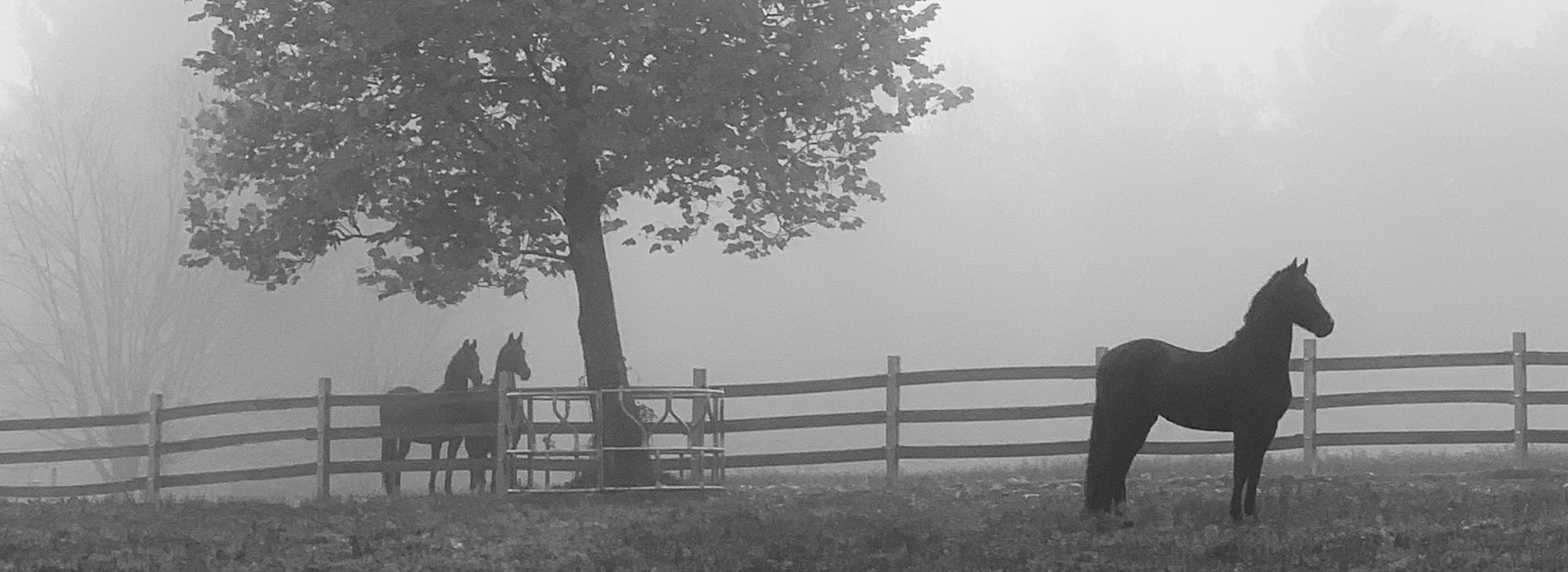In Memory - Ray Ordway
 |
|
| Ray Ordway and HMSTD Shuda Bin A Cowboy aka Henry |
Ray Ordway passed away on April 26, 2020. One of the very last of the true old California vaqueros, Ray came by his heritage naturally. The Ordways descended from immigrant ancestor James Ordway who was a member of the Massachusetts Bay Colony. Ray’s grandfather, Parker Dole Ordway, was born in New Hampshire and came to California with his family as a boy. Parker established a ranch along the San Lorenzo River in the Santa Cruz Valley known as Glen Arbor, and nine children, including Ray’s father, Ira Ordway, were born there. Ira learned to speak, read and write Castilian Spanish to better communicate with the vaquero horsemen and he saw to it his sons learned firsthand from the old California masters. Ray Ordway was born August 22, 1924, and his earliest memories were of his father putting him on the horse in front of him when moving cattle. He recalled riding on his own by the time he was six or seven. At that time, Ray remembered his father always spoke of Morgans as being the best horses, and the horses Ira and his sons rode were mostly Morgan. Many of the ranches Ray remembered had Morgans, though often they were unregistered.
At 13, he and his younger brother Jack started their own cattle business called The Ordway Brothers, and by the time he was 14 years old, Ray and Jack began working alongside their older brothers Kent and Oliver at the 42,185-acre Rancho Jesus Maria in Santa Barbara County. This covers the area where Vandenberg Airforce Base is now. The ranch was a Mexican land grant dating back to 1837 when it was given by governor Juan B. Alvarado to José and Lucas Olivera. His pay was five-dollars a month.
After finishing high school, Ray and Jack worked for their oldest brother Kent on the 20,000-acre Oak Flat Ranch. The cattle in those days were longhorn descendants from the early Spanish cattle, tough, wiry animals of about 700 – 800 pounds.
The three younger Ordway brothers all served in World War II. Ray was 18 and spent most of his three-year tour at Westover Airfield in Massachusetts. He returned in 1946, and good vaquero skills were still in demand, so he hired out starting colts at the Jack Ranch in Cholame. He also did work for H. Moffatt & Co., as well as some other cattle companies, and at one time was starting colts for nine different outfits. A few years later, after his father and brother Kent passed away in 1954, Ray moved to Merced and managed his father’s ranch for a while, and then managed Kent’s Vasco Ranch in the Livermore area for a couple years. Eventually starting his own cattle business on leased land. This was profitable when land was leasing for $3.25 an acre, but eventually the price went up so it was no longer worthwhile, and he went back to starting colts for various ranches. He married LaVerne Disbro in 1957 and for more than 60 years she wholeheartedly supported his vaquero interests.
He met Roland Hill at his Santa Ana Valley ranch where he kept his broodmares, and also was well acquainted with Roland’s brother Russell. Later, in the 1970s, through Buster Clark and Russell Hill, he also met the legendary Arnold Rojas, when Rojas was selling his books.
After retiring, Ray bought a buckskin Morgan gelding, HMSTD Shuda Bin A Cowboy, or “Henry” for short, to train as a bridle horse for his own use and to keep busy. He was a close friend of Ed Connell, who used to work for his brother Kent. Ed was the first man to write down the details of vaquero training methods, and published several books. Ray and LaVerne regularly enjoyed attending California vaquero events through the years, and Ray was often honored for his contribution to the vaquero legacy.
In October 2007, Ray participated in a four-day film shoot for the Essential Image Source Foundation’s project, “The Legacy of the California Vaquero,” www.eisf.org . Several of the best vaqueros in the country were gathered for this historic project. Ray roped with Jay and Deeth Harney, representing three generations of California vaqueros ranging in age from 20s to 80s. Ray roped the head, Jay the heels and Deeth the front feet to lay the calf down in a gentle manner, demonstrating the classic vaquero style of using the reata. Always cheerful, Ray was still active at 95, full of stories about the old vaquero days, and generous in sharing his timeless wisdom. He will be missed.
The feature “Ray Ordway: Dean Of The Living Vaqueros,” by Brenda Tippin was published in The Morgan Horse, March 2010.
Submitted by Brenda L. Tippin
